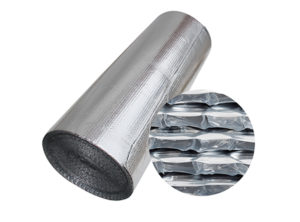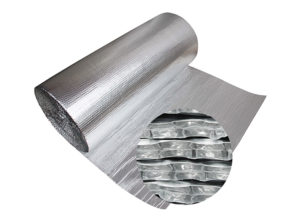





- If you want to block heat, you need to understand how heat is transferred.
Heat is transferred in three basic ways: conduction, convection and radiation.

- Conduction: The transfer of heat from a hotter part of an object to a cooler part of an object is called conduction.
When we place a metal spoon in a bowl of hot soup, the heat from the soup is gradually transferred to the handle of the spoon.
- Convection: The transfer of heat through the flow of a liquid or gas is called convection.
For example, a hair dryer can blow hot air because it has a fan inside and the heat is forced out; this is convection.
- Radiation: When heat is emitted from an object in a straight line to the outside, it is called radiation.
Therefore, radiation can take place in a vacuum. We can feel the warmth of the sun is the sun through the transmission of radiation
- How does foil bubbleinsulationeffectively insulate against heat?
Bubble insulation materials is designed to reduce heat transfer by radiation.
Aluminum foil are effective in blocking thermal or ultraviolet radiation. If it is 96% reflective, this means that the product allows only 4% of radiant heat to pass through.
The bubble layer is what prevents the transfer of 4% of the heat generated by radiation.

Seal PE bubble film to isolate conduction and convection.
The function of bubble wrap is to prevent heat from penetrating into the ceiling or outside. Without this air hole, the bubble film would conduct heat, which would pass directly through the material and through the outdoors to the ceiling.
The most typical example of thermal insulation is a thermos flask, which has a vacuum layer, which reduces heat conduction and convection.
At the same time, the inner wall of the vacuum layer is coated with copper or silver to prevent the absorption of heat radiation.
- Choosing between single-sided or double-sided bubbles?
The best insulation is inevitably a stack of non-conductive heat + multiple layers of heat radiation isolation materials.
The more reflective the aluminum film on the bubble membrane is, the more heat radiation is reflected and the less heat stays on the roof.
The thicker the bubble layer, the more air there is in the bubbles, which prevents the heat that stays on the roof from seeping into the room
The better the insulation.

If this material is nailed to the attic ceiling, the main source of heat from the roof is thermal radiation, and the aluminum foil bubble insulation becomes a great radiant barrier so that the attic doesn’t turn into a steam room in the summer,keep warm in winter。
When it comes down to it, the best insulation materials for you is the one that meets your needs and suits your climate.



